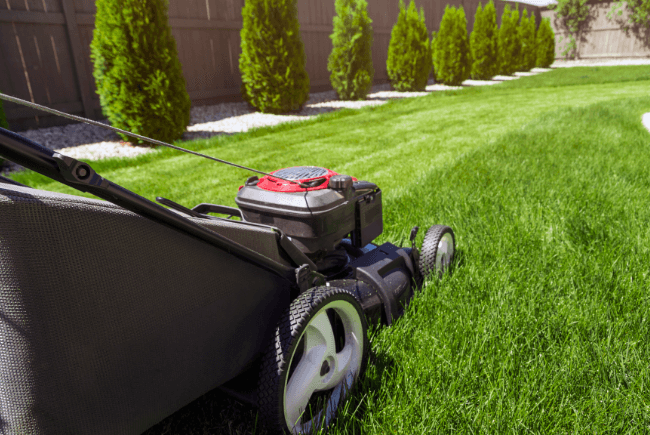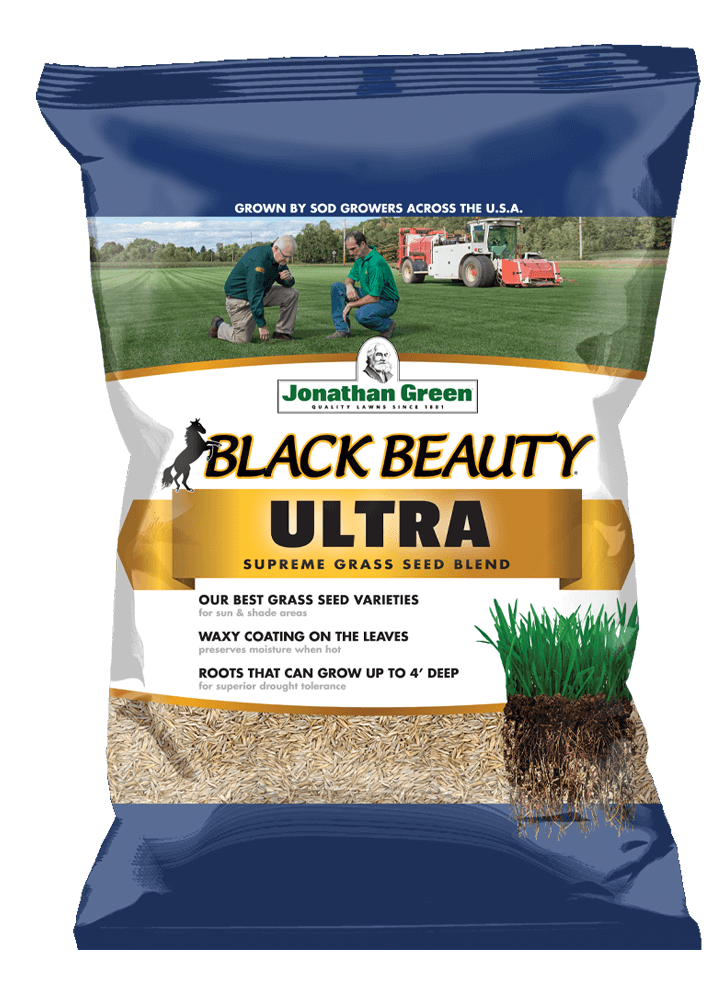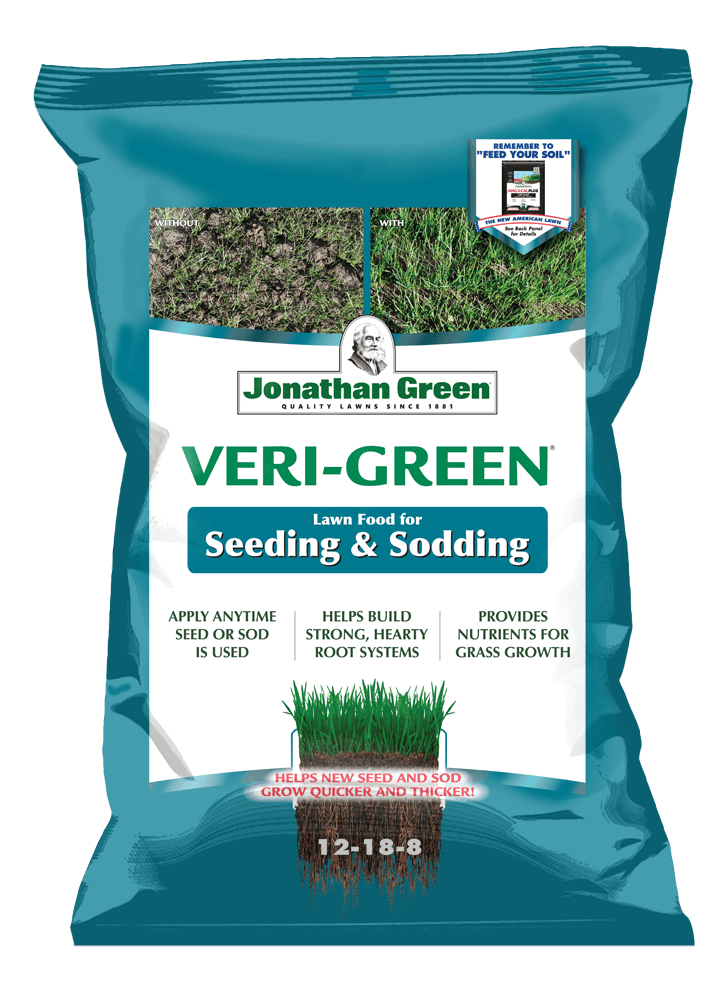How to Overseed a Lawn: Your Complete Guide to Thicker, Greener Grass
Want the secret to growing a thicker, greener lawn? It’s simple! Overseeding is the key to making sure your lawn maintains its vibrant, lush appearance. Even the healthiest grass can be reinvigorated by overseeding it with new grass seed.
As time goes on, cool-season grass plants mature, and their reproduction rates begin to slow down. This can leave your lawn looking dull and unhealthy.
Overseeding is an easy, cost-effective practice you can implement in your lawn care routine to give your existing lawn a boost in the growing seasons. Once complete, you’ll have a lawn with enhanced color, thickness, and improved appearance over time.
Here is your comprehensive guide, with easy step-by-step instructions on how to overseed a lawn with cool-season grass seed:
What is Overseeding?
Overseeding a lawn is the process of spreading new grass seed over an existing lawn. The term commonly gets confused with another lawn care process called reseeding, which involves killing the existing grass and weeds, then starting fresh by planting new grass seed. Many homeowners decide to reseed their lawn when there is extensive damage, the lawn is overgrown with weeds, or simply just wanting a fresh start with a different type of grass seed.
Overseeding, on the other hand, is a cost-effective, less time-consuming, and less labor-intensive option if you’re just looking to repair a few areas in your lawn or thicken up the lawn in general.
Why Should I Overseed My Lawn?
One of the main benefits of overseeding a lawn is that it revitalizes a thinning lawn without having to start from scratch and reseed the lawn. Over time, even the best lawns can begin to lose the vigor they once had. Factors such as excess traffic, too much shade, weather conditions, and disease can take a toll on your lawn’s appearance and cause the grass to thin. Overseeding can help to thicken those thinning areas by filling them in with new grass seed.
Overseeding also increases your lawn’s ability to resist weeds and disease. Thinning, worn-out lawns create ideal conditions for weeds to grow because there is plenty of space available. Overseeding is a quick and easy way to crowd out weeds by thickening the existing lawn and denying space, light, and nutrients needed for weeds to grow. Remember, the best way to keep weeds from taking over is to have a healthy, dense lawn.
When Should I Overseed My Lawn?
Overseeding a lawn at the right time is essential for the best results. The right time to overseed a lawn depends on the type of grass seed you have. For cool-season grass, aim to overseed in the fall, preferably in early September. A beneficial combination of cool air and warm soil temperatures during this time create the ideal conditions for new seedlings to successfully germinate.
If you happen to miss out on fall seeding, the next best time for overseeding a cool-season lawn is in early spring, ideally between March and April and when your soil has reached a temperature of 55℉ consistently.
How to Overseed a Lawn
1. Choose The Right Seed
The first, crucial step to overseeding a lawn is choosing the correct type of grass seed. When selecting grass seed, you should always consider the region you live in to determine if the climate conditions are suitable for proper germination and growth.
It is equally important to choose a high-quality grass seed variety. Like other plants and vegetables, certain species of grass have developed to be more drought and disease-resistant. Jonathan Green Black Beauty® Grass Seed mixtures can grow roots up to four feet deep, are naturally dark green in color, and have a waxy coating on the blade to help prevent damage from disease and insects.
Jonathan Green Black Beauty® Ultra Grass Seed is perfect for overseeding cool-season lawns, as it combines tall fescue seed varieties with Kentucky bluegrass and perennial ryegrass to make it easier and faster to spruce up thinning lawns.
2. Mow Your Lawn

Once you’ve selected the right seed, mow your lawn on the lowest mower setting (around 1 – 2 inches). Make sure to bag the clippings. This will ensure that the grass seed will make contact with the soil and get adequate sunlight and water.
3. Remove Thatch And Debris
After mowing, rake your yard with a metal rake or a dethatching machine to remove excessive thatch and debris. Thatch is a layer of organic components (leaves and stems) found between the grass and soil that can prevent proper air circulation and water absorption for seedlings, which is necessary for germination. Vigorously raking your lawn also helps to loosen and break up the soil to create good seed-to-soil contact, making it easier for the seeds to take root.
4. Improve Soil
Healthy soil is an integral part of a healthy lawn. If your soil pH is too acidic or too alkaline, it creates an unhealthy environment for new seedlings making it difficult for them to sprout. Prior to spreading grass seed, test your soil’s pH and compaction.
To help balance soil pH and loosen compacted soil, apply Jonathan Green Mag-I-Cal Plus®. It includes calcium, which is a vital element that aids in healthy grass plant growth and gypsum to stimulate soil microbial life, release trapped nutrients in the soil and relieve compaction.
5. Spread Seed
Prior to spreading seed, make sure you carefully follow instructions on the seed label. For smaller areas, spread seed by hand or use a handheld spreader. For larger areas, use a broadcast spreader to ensure all areas get the proper amount of seed.
After spreading the seed, lightly rake the seed into the top ¼ inch of the soil to ensure proper seed-to-soil contact.
6. Fertilize With A New Seeding Fertilizer
After spreading the seed, apply a new seeding fertilizer. This will give your new seedlings the nutrients they need to develop a deep root system and germinate properly. Opt for a fertilizer that is rich in phosphorus and can be applied at the time as seeding, such as Jonathan Green Veri-Green Starter Fertilizer for Seeding & Sodding, which is specially formulated to grow strong roots to help your lawn withstand stress, especially from summer and winter weather.
Mentioned Products
7. Water Seed
New seedlings need the correct amount of moisture to ensure proper germination. Water new seedlings lightly twice daily for 10-15 minutes each time for the first few weeks after planting seed.
8. Aftercare and Proper Maintenance
Having an aftercare plan is important post-seeding to ensure all of your hard work doesn’t go to waste! Once you’ve applied seed, make sure to maintain a regular watering and mowing schedule. Be sure to wait until the grass blade height has reached about four inches before mowing for the first-time post-seeding. Also, even though it’s tempting to run around on your new, lush lawn, it’s best to try to limit excess traffic on your newly overseeded lawn to avoid damage.
Conclusion
Overseeding your lawn is an important part of your lawn care routine. It’s a simple hack that will deliver lasting results for a lawn you will be proud of. Whether it’s to give some life back to a dull lawn or just maintaining the beautiful lawn you have now, overseeding your existing lawn with new grass seed can give you the thick, lush lawn you want in no time!

